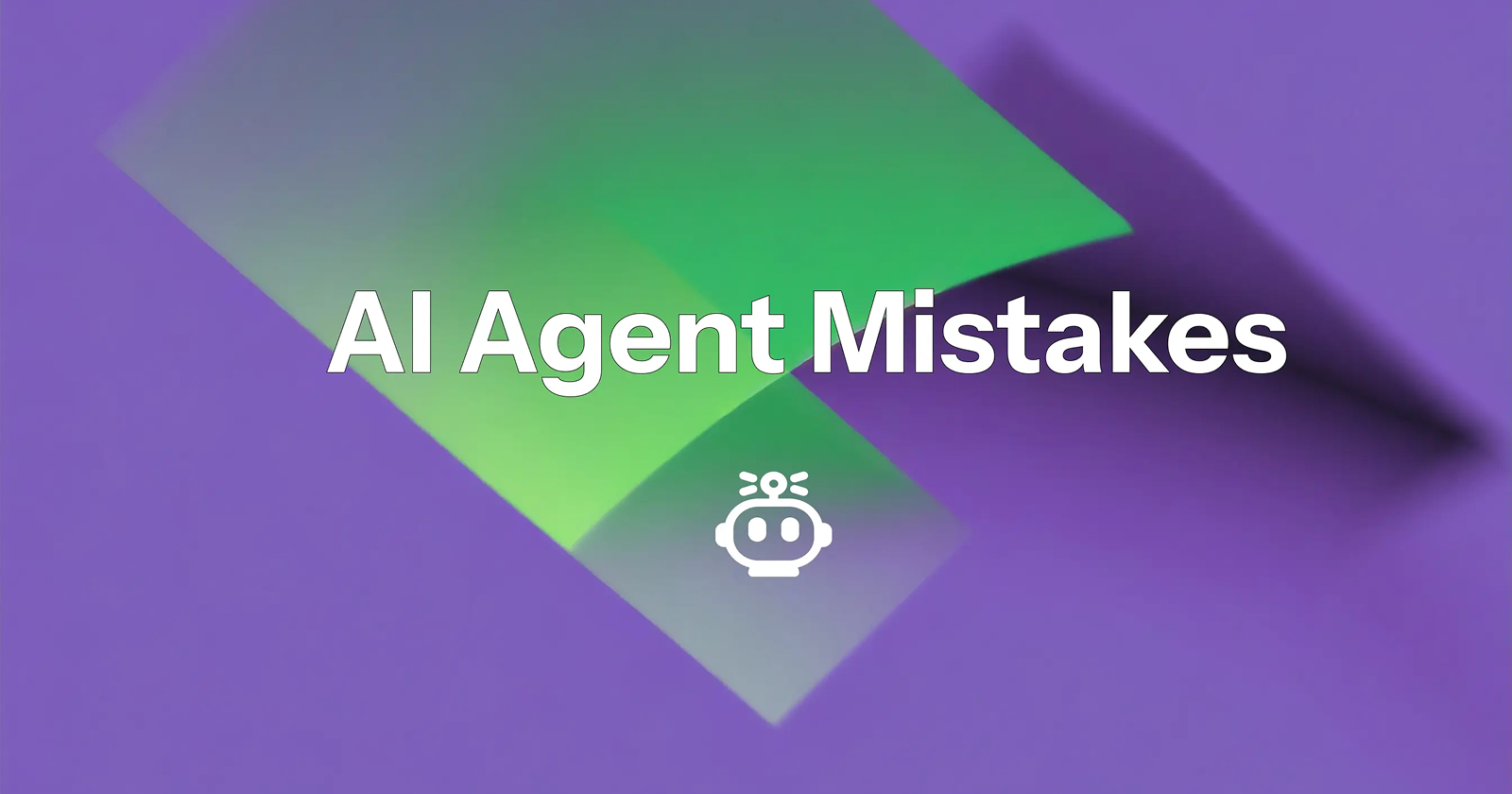Common AI Agent Mistakes: How Intelligent Agents Fail and What You Can Do
 Horatiu Voicu
Horatiu Voicu
AI agents, powered by large language models (LLMs), are transforming industries—from customer support to healthcare and beyond. However, despite their potential, these intelligent systems are not immune to errors. Understanding the common mistakes AI agents make is crucial for developers, businesses, and anyone leveraging AI to ensure reliability, security, and efficiency.
In our latest blog post, Common AI Agent Mistakes, we dive deep into the pitfalls of AI agents and provide actionable strategies to address them. Whether you’re building AI solutions or simply curious about their limitations, this post is a must-read.
1. Lack of Fact-Checking in AI Agents
One of the most common issues AI agents face is providing inaccurate or incomplete information. For example:
A user asks about fees for an international transfer, and the AI provides outdated or incorrect amounts.
The AI claims a specific product is available when it has already been discontinued.
Why It Matters:
Without proper fact-checking mechanisms, the reliability of AI responses decreases significantly, leading to user frustration and mistrust.
How to Fix It:
Integrate real-time data validation tools.
Regularly update training datasets to reflect current information.
Implement fallback mechanisms for uncertain queries.
2. Generating Off-Topic Content
AI agents are trained to provide relevant responses, but they can sometimes go off-topic, especially when manipulated or prompted in unconventional ways. Examples include:
Responding with creative content like poetry instead of financial details.
Explaining how to write Python code when asked about loan eligibility.
Revealing internal system details not meant for end users.
Why It Matters:
Off-topic responses can frustrate users and erode trust in the AI system.
How to Fix It:
Reinforce training with stricter guidelines.
Use intent detection models to ensure responses stay on topic.
Monitor and flag unusual user interactions.
3. Technical Leaks and System Prompt Exposure
AI agents can inadvertently expose internal system prompts or configuration settings, leading to potential security vulnerabilities. For example:
Printing out internal commands like
system_prompt = (Assistant is trained to…).Revealing configuration settings when manipulated by users.
Why It Matters:
Such leaks can compromise system integrity and expose sensitive information.
How to Fix It:
Implement robust input sanitization.
Use role-based access controls to limit exposure.
Regularly audit system prompts for vulnerabilities.
4. Cost Control Issues
LLM-based AI agents can become expensive if not properly managed. Common mistakes include:
Processing oversized input messages that exceed system limits.
Flooding the API with excessive requests.
Generating excessively long responses where concise answers would suffice.
Why It Matters:
Poor cost management can lead to skyrocketing operational expenses.
How to Fix It:
Set strict message length limits.
Implement rate-limiting mechanisms.
Optimize response generation for efficiency.
5. The Role of Continuous Optimization
AI agents are not “set it and forget it” systems. Regular testing and fine-tuning are essential to adapt to user behavior and improve performance. For example:
Analyzing user interactions to identify weak spots.
Refining responses to better align with user intent.
Implementing feedback loops to prevent misinformation or technical failures.
Why It Matters:
Continuous optimization ensures AI agents remain effective, reliable, and secure over time.
Why Testing AI Agents Matters for CRO
Testing AI agents isn’t just about improving functionality—it’s also critical for conversion rate optimization (CRO). A well-tested AI agent:
Delivers accurate, relevant, and helpful responses.
Reduces friction in the decision-making process.
Increases user engagement and trust.
On the other hand, poorly managed AI agents can lead to:
Misleading or inconsistent responses.
Frustrated users and abandoned sessions.
Lower conversion rates and damaged credibility.
Conclusion
To build AI agents that are reliable, secure, and efficient, rigorous testing and optimization are essential. By addressing common mistakes like lack of fact-checking, off-topic content, technical leaks, and cost control issues, businesses can ensure their AI systems deliver value while maintaining user trust.
For a deeper dive into these challenges and actionable strategies to overcome them, check out the full article on the Genezio’s blog.
Let’s Discuss!
Have you encountered any of these AI agent mistakes in your projects? What strategies have you used to address them? Share your experiences and insights in the comments below—I’d love to hear your thoughts!
Subscribe to my newsletter
Read articles from Horatiu Voicu directly inside your inbox. Subscribe to the newsletter, and don't miss out.
Written by
